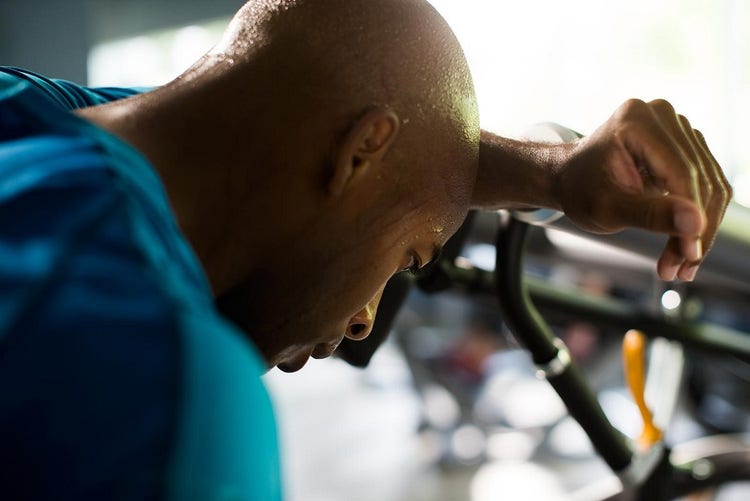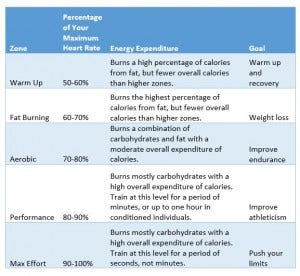Six Mistakes to Avoid Making in the Gym

Sometimes, small things that seem harmless can actually put us at risk in the gym. Here are six mistakes that you should be sure to avoid in order to have a safe and effective sweat session.
1. Not staying hydrated
You want to be at your best in the gym, and a dehydrated body is not one primed for training.
You should not only be drinking water during your workout, but before and after as well. When you’re dehydrated, you might feel lightheaded, nauseous, out of breath or unfocused – all states which can be potentially dangerous when using fitness equipment. Lack of hydration can also cause side effects like headaches and low energy – two other factors that will derail your workout plans. When in doubt, drink more water and make sure you always have a water bottle packed in your gym bag. For most of us, 64-96 ounces of water per day is a good target.
2. Overtraining
Enthusiasm and consistency are necessary for improving your physical fitness, but make sure you give your body opportunities to recover or you’ll end up slowing down your progress. When you train, particularly if you’re lifting weights, your muscles are actually withstanding minor damage. Don’t worry though – this is a good thing! As your muscles repair themselves, they get thicker, which is how we build muscle.
For example, instead of running on the treadmill every day, mix in a yoga class or strength training session throughout the week. Switching up your exercises will help you avoid overworking a particular muscle group and allow you to improve your whole-body fitness. And on your rest days, consider some active recovery activities or foam rolling.
If you notice signs of overtraining, such as unusual fatigue, an inability to perform movements, persistent muscle soreness, difficulty sleeping, or a decreased appetite, you may want to adjust your training schedule to include more time for rest.
3. Pushing yourself into the cardio danger zone
Everyone, from the seasoned athlete to the beginning enthusiast, should be aware of their max heart rate and their personal target heart rate zones. Basically, you don’t want to be going at a full-force effort for too long in your workout. In order to be smart with your intensity levels, you can monitor your heart rate for approximate zones.
To estimate your maximum heart rate, subtract your age from 220. This will give you the number of beats per minute that your heart should not exceed. And your heart rate zones are calculated as percentages of your maximum heart rate.

It’s always a good idea to consult your doctor before making a big change in your level of physical activity, particularly if you have any reason to be concerned about raising your heart rate. Once you get the green light to exercise, start small. For fitness beginners, it’s recommended that you do not push yourself into the max effort zone.
Your resting heart rate is the number of beats per minute you have when you are not active, and is often used as a baseline for estimating a person’s fitness level. As you improve your conditioning, you should see your average resting heart rate decrease, and you’ll be able to push yourself harder in your workouts. Moral of the story: Don’t go too hard for too long, too soon.
4. Working out when you’re sick
As a general rule, if you’re not feeling well, it’s better to skip your workout. Not only can you make yourself feel worse, but you might spread germs at the gym and get others sick. You might think that hitting the gym when you’re sick is an act of commitment to your fitness routine or a way to “sweat out the fever,” but it doesn’t always work that way.
You need rest to get better, so stressing your body with a workout might delay your recovery. If you’re feeling weak or dizzy, you’re more likely to injure yourself while training, and if you’re already feeling bad, you’re almost guaranteed to have a miserable time. Stay home, get better, and then get back to working hard in the gym when you’re fully recovered.
5. Mistaking pain for the normal burn of exercise
A little muscle discomfort as you push your muscles to work harder than they are used to is part of fitness, but you should know how to recognize when something isn’t right. Be wary of sharp pain that comes on suddenly and doesn’t quickly fade when you stop exercising. When in doubt, seek help from a medical professional.
6. Lifting weights with poor form
We see this mistake all the time, and it’s probably one of the easiest to make at the gym. Lifting with incorrect form can, at best, slow down your progress and, at worst, wreak havoc on your body. Whether the slip-up is caused by lifting weights that are too heavy, hunched shoulders, an arched back, wobbly knees, or one of the many other little mistakes that compromise your muscles and joints, lifting with poor form is a problem that you want to correct ASAP.
If you’re not sure what proper form looks like, take the time to watch videos of the lifts you’d like to perform. You may also want to have a trainer or spotter watch your lifts, as it’s easy to use improper form in practice, even when you know how the movement should look. Lastly, keep in mind that you don’t necessarily want to turn to the person next to you for reference – they might not be lifting with good form either!
Now that you’re in the know, you can make sure to steer clear of these mistakes. Safety should always be your first priority in the gym and, with some mindful precautions, you can keep injuries at bay and get great results.